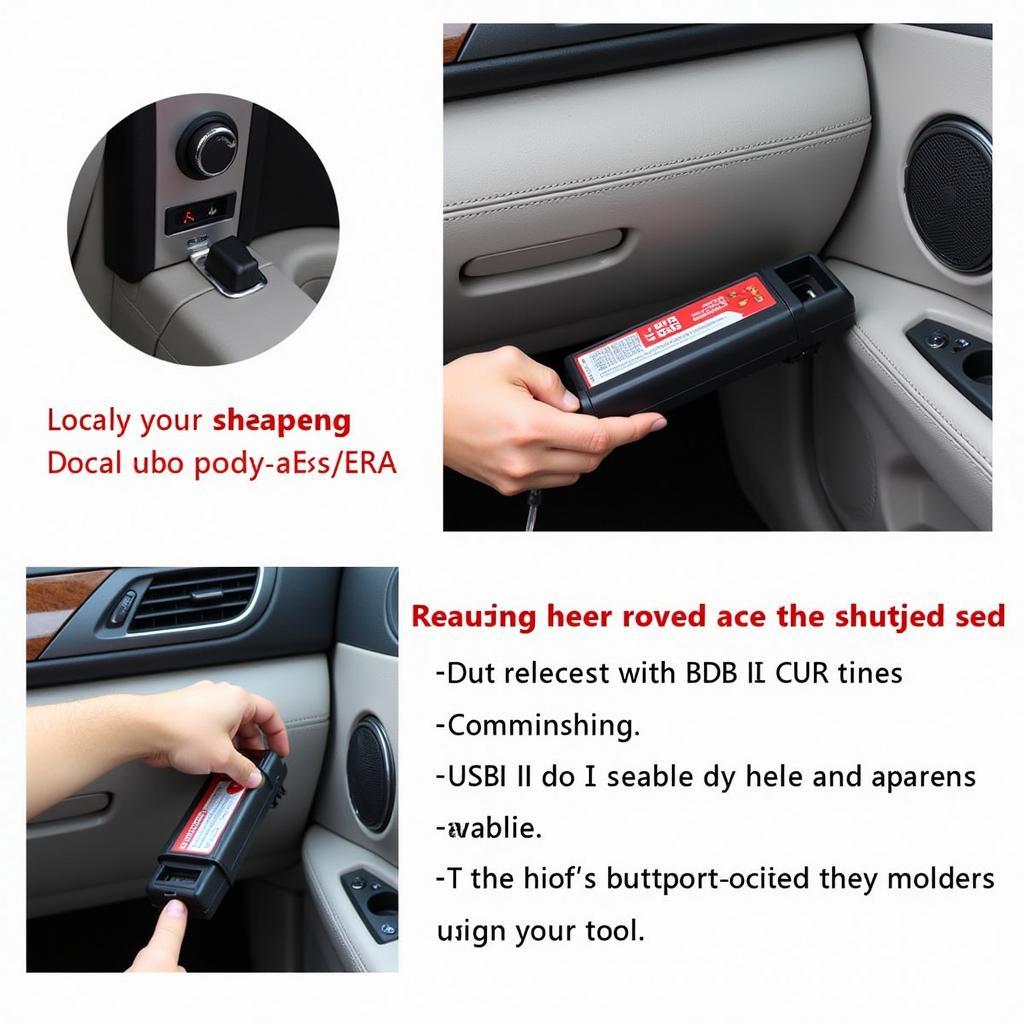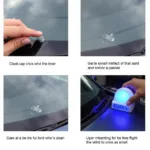A car diagnostic scan OBDII tool is an essential piece of equipment for any car owner or mechanic. These powerful devices can quickly and easily diagnose problems with your vehicle, saving you time and money on repairs. Whether you’re a seasoned mechanic or a DIY enthusiast, understanding OBDII tools is crucial for maintaining your vehicle’s health. This guide delves into everything you need to know about car diagnostic scan OBDII tools, from their functionality to choosing the right one for your needs.
Understanding the Power of OBDII Scan Tools
OBDII, or On-Board Diagnostics II, is a standardized system that allows you to access your car’s computer and retrieve diagnostic trouble codes (DTCs). These codes provide valuable insights into the health of your vehicle’s various systems, including the engine, transmission, and emissions control. An OBDII scan tool acts as the key to unlocking these codes, giving you the power to pinpoint issues and take appropriate action.
Imagine this: your check engine light illuminates, filling you with dread. Instead of rushing to a mechanic and facing potentially hefty diagnostic fees, you can simply plug in your OBDII scan tool. Within seconds, the tool retrieves the DTC, providing you with a starting point for troubleshooting. This empowers you to research the code, understand the potential problem, and even decide whether it’s a DIY fix or requires professional attention.
Choosing the Right Car Diagnostic Scan OBDII Tool: A Buyer’s Guide
Selecting the appropriate OBDII scan tool can feel overwhelming, given the plethora of options available. From basic code readers to advanced professional-grade scanners, the market is flooded with tools catering to different needs and budgets. Understanding the different types and features is key to making an informed decision.
Types of OBDII Scan Tools
- Basic Code Readers: These entry-level tools primarily retrieve and display DTCs. They are ideal for casual users who want a quick overview of potential issues.
- Enhanced Code Readers: Offering more features than basic code readers, these tools can display live data streams, allowing you to monitor sensor readings in real-time.
- Professional Scan Tools: Designed for mechanics and advanced DIYers, these tools provide comprehensive diagnostic capabilities, including bi-directional control, allowing you to activate specific components for testing.
Key Features to Consider
- Code Reading and Clearing: The ability to read and clear DTCs is fundamental to any OBDII scan tool.
- Live Data Streaming: Accessing real-time sensor data can be invaluable for diagnosing intermittent issues or monitoring system performance.
- Bi-directional Control: This feature enables you to test components by activating them directly, a powerful diagnostic capability.
- Vehicle Compatibility: Ensure the tool is compatible with your vehicle’s make, model, and year.
- User Interface and Display: A clear and intuitive interface makes using the tool more efficient.
How to Use a Car Diagnostic Scan OBDII Tool
Using a car diagnostic scan OBDII tool is surprisingly straightforward. Simply locate your vehicle’s OBDII port (usually under the dashboard on the driver’s side), plug in the tool, and turn on the ignition. The tool will then communicate with your car’s computer and retrieve any stored DTCs. From there, you can research the codes and determine the next steps.
“A good OBDII scan tool is like having a mechanic in your pocket. It empowers you to understand your car better and take control of its maintenance.” – John Davis, Certified Automotive Technician
Beyond the Basics: Advanced OBDII Functionality
While reading and clearing codes is the primary function of most OBDII scan tools, more advanced models offer a range of additional features. These can include ABS and airbag system diagnostics, smog check readiness monitoring, and even programming capabilities.
ABS and Airbag Diagnostics
Modern OBDII scan tools can often access diagnostic information from other vehicle systems, including ABS and airbags. This allows you to diagnose issues with these critical safety systems and address them promptly.
Smog Check Readiness
Preparing for a smog check can be stressful. Many OBDII scan tools provide smog check readiness monitors, ensuring your vehicle is compliant before heading to the testing station.
“Investing in a quality OBDII scan tool is an investment in your car’s longevity. It allows you to catch problems early and prevent them from becoming major headaches.” – Maria Sanchez, Automotive Engineer
Car Diagnostic Scan OBDII Tool: FAQs
Here are some frequently asked questions about car diagnostic scan OBDII tools:
- What is an OBDII port? The OBDII port is a standardized connector that allows access to your vehicle’s onboard computer.
- Are all OBDII scan tools the same? No, OBDII scan tools range from basic code readers to advanced professional scanners.
- Can I fix my car with an OBDII scan tool? While an OBDII scan tool helps diagnose problems, it doesn’t perform repairs.
- Do I need a professional OBDII scan tool? It depends on your needs and technical expertise. Basic tools are sufficient for most car owners.
- How often should I use an OBDII scan tool? Periodically checking for codes is recommended, especially if the check engine light illuminates.
- Can an OBDII scan tool clear my check engine light? Yes, but clearing the light doesn’t fix the underlying problem.
- Where can I buy a car diagnostic scan OBDII tool? OBDII scan tools are readily available online and at auto parts stores.
In conclusion, a car diagnostic scan OBDII tool is a valuable asset for any car owner. Whether you’re a DIY enthusiast or simply want to stay informed about your vehicle’s health, an OBDII scan tool provides the power to diagnose problems, save money on repairs, and take control of your car’s maintenance. If you are looking for assistance with your car diagnostic needs, feel free to reach out. We offer 24/7 customer support via WhatsApp: +1(641)206-8880, or Email: [email protected].


